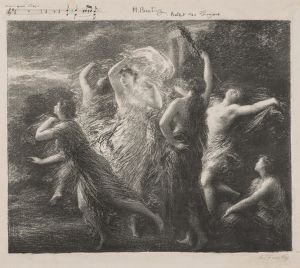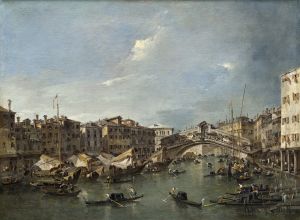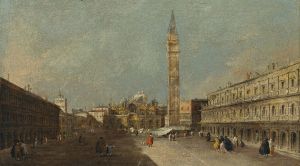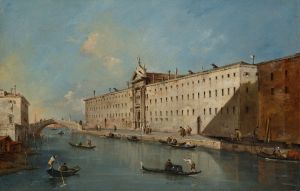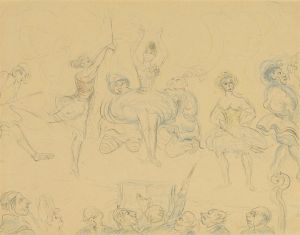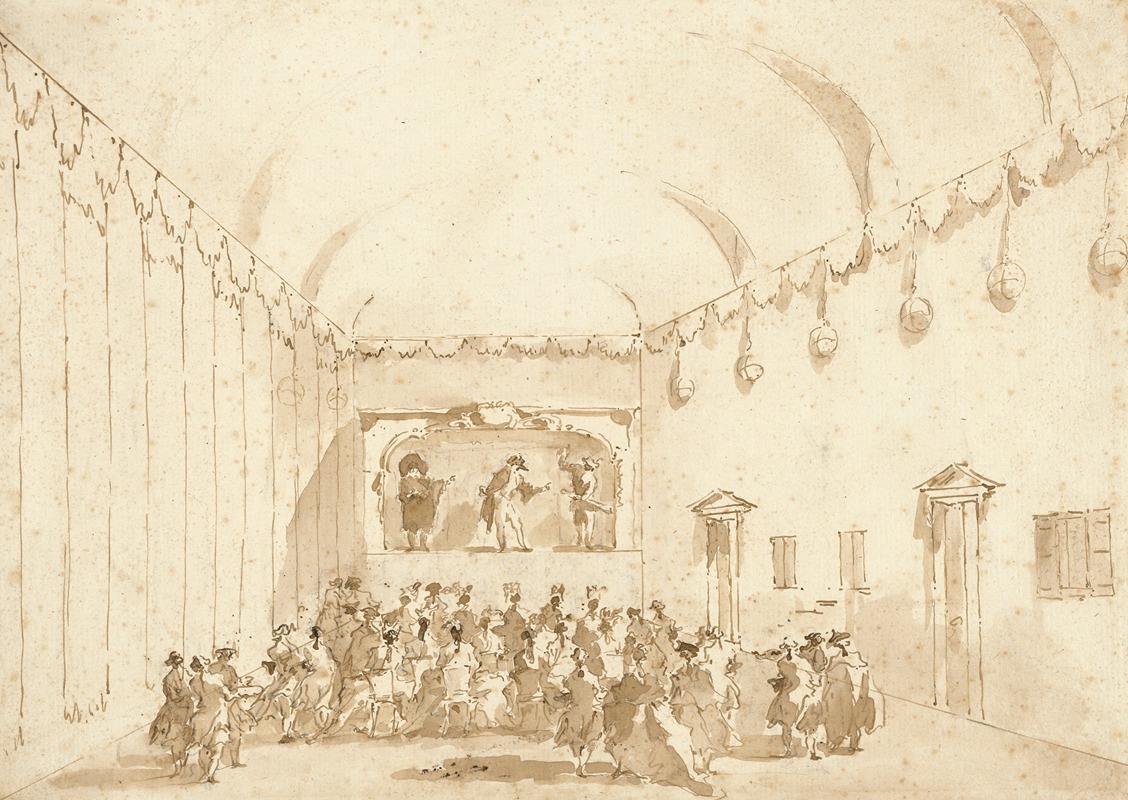
A Theatrical Performance
A hand-painted replica of Francesco Guardi’s masterpiece A Theatrical Performance, meticulously crafted by professional artists to capture the true essence of the original. Each piece is created with museum-quality canvas and rare mineral pigments, carefully painted by experienced artists with delicate brushstrokes and rich, layered colors to perfectly recreate the texture of the original artwork. Unlike machine-printed reproductions, this hand-painted version brings the painting to life, infused with the artist’s emotions and skill in every stroke. Whether for personal collection or home decoration, it instantly elevates the artistic atmosphere of any space.
Francesco Guardi, an Italian painter of the 18th century, is renowned for his captivating vedute, or cityscapes, of Venice. Among his works, "A Theatrical Performance" stands out as an intriguing piece that reflects the vibrant cultural life of Venice during the Rococo period. Although Guardi is primarily celebrated for his landscapes, this painting offers a glimpse into the theatrical traditions and social gatherings of his time.
"A Theatrical Performance" captures a scene from a Venetian theater, a popular form of entertainment in 18th-century Venice. The painting is characterized by Guardi's distinctive style, which includes loose brushwork and a keen attention to atmospheric effects. This approach allows him to convey the lively and dynamic nature of the performance, as well as the opulent setting in which it takes place.
The composition of the painting is carefully arranged to draw the viewer's eye towards the stage, where actors are engaged in a dramatic scene. The audience, depicted in the foreground, is shown in various states of engagement, from rapt attention to casual conversation. This depiction not only highlights the social aspect of theater-going but also reflects the diverse audience that such performances attracted, ranging from the Venetian nobility to common citizens.
Guardi's use of light and shadow in "A Theatrical Performance" is particularly noteworthy. The illumination of the stage contrasts with the dimly lit audience, creating a sense of depth and focus. This technique enhances the theatricality of the scene, emphasizing the separation between the performers and the spectators. The warm tones and soft lighting contribute to the overall ambiance, evoking the intimate and immersive experience of attending a live performance.
The painting also offers insights into the architectural features of Venetian theaters of the period. The ornate decorations, including gilded moldings and plush draperies, reflect the grandeur and elegance typical of such venues. These details underscore the importance of theater as a cultural institution in Venice, where it served as a platform for artistic expression and social interaction.
While specific details about the exact performance depicted in the painting are not documented, it is likely that Guardi drew inspiration from the popular theatrical genres of his time, such as opera, commedia dell'arte, or spoken drama. These forms of entertainment were integral to Venetian society, providing both amusement and a means of exploring contemporary themes and issues.
Francesco Guardi's "A Theatrical Performance" is a testament to his ability to capture the essence of Venetian life beyond the canals and piazzas for which he is best known. Through this painting, he offers a window into the cultural vibrancy of 18th-century Venice, highlighting the role of theater as a vital component of the city's artistic and social fabric. The work remains an important piece within Guardi's oeuvre, illustrating his versatility as an artist and his keen observation of the world around him.






